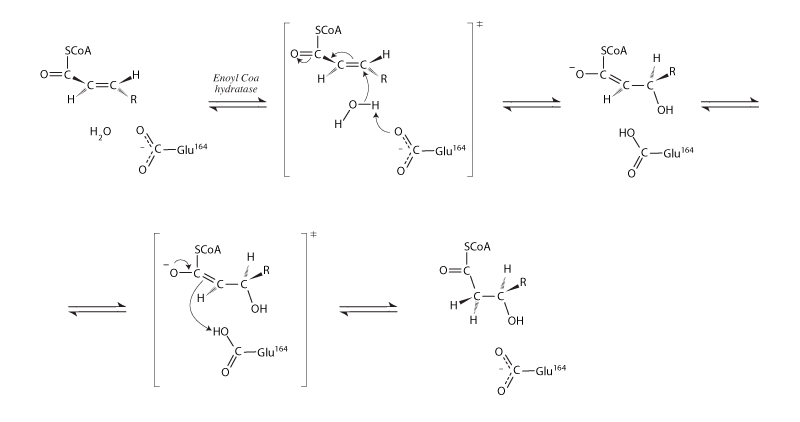Interdisciplinary Note (17 of 29)
The double bonds of αβ-unsaturated aldehydes or ketones are stabilized by resonance. Overlap of the individual π systems leads to conjugation. One of the resonance form places a partial positive charge on the β carbon, giving the β carbon electrophilicity, so while double bonds are customarily attacked by electrophiles, with an αβ-unsaturated aldehyde or ketone, the potential exists for attack of the double bond at the β carbon by a nucleophile. There are two sites, therefore, for nucleophilic attack in an αβ-unsaturated aldehyde or ketone, the carbonyl carbon (leading to direct or 1,2 addition) and the β carbon (leading to conjugate or 1,4 addition).
Comparing the much easier nucleophilic addition to the double bond of an αβ-unsaturated aldehyde or ketone to a rare, difficult nucleophilic addition to a typical alkene, means comparing the carbanion intermediate produced by conjugate addition to the carbanion intermediate produced by addition to the ordinary alkene. Nucleophilic addition to the αβ-unsaturated aldehyde or ketone forms a resonance stabilized enolate anion. In the ordinary carbanion, the negative charge density is confined to a single carbon, while in the enolate, the negative charge density is delocalized by resonance. A good rule of thumb is that like charge confined exists at higher energy than like charge spread out. In chemical terms, this translates to higher internal energy, enthalpy, and free energy, which means less concentration at equilibrium and also, as a general rule, a higher activation energy barrier to formation.
